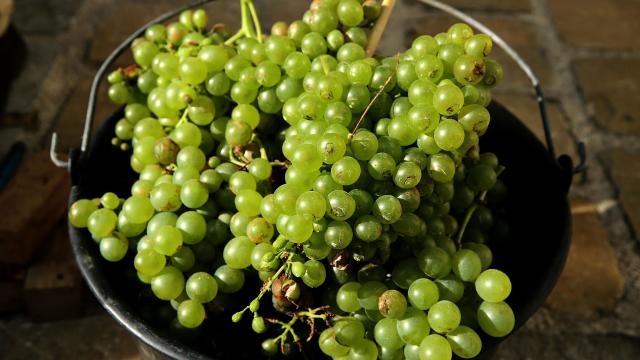The climate crisis is changing all aspects of human life, from the communities we live in to the air we breathe to the food we eat. Thinking about it is terrifying. It makes me want a glass of wine to soothe my nerves.
But it turns out even wine isn’t safe from the impacts of climate change. In fact, wine grapes are extremely sensitive to changes in weather and temperature. New research shows that if global temperatures rise by 2 degrees Celsius above pre-industrial levels, the world could lose over half of its best wine-producing regions. If temperatures rise by 4 degrees Celsius, the percentage of degraded wine-growing regions lost could go up to 85 per cent. So basically, those of us that aren’t super rich can say goodbye to good wine.
Fortunately, the study, published in the Proceedings of the National Academy of Sciences on Monday, does outline an adaptation strategy: changing which grape varieties to grow in which regions.
“There are still opportunities to adapt viticulture to a warmer world,” study co-author Benjamin Cook said in a statement. “It just requires taking the problem of climate change seriously.”
In general, grapes ripen more quickly in warmer climates, which can make wine less acidic, more sweet, darker in colour, and higher in alcohol. Each varietal of grape does better in different climates, and shifting temperatures and seasonal changes both affect how grapes grow and ripen as well as the quality of the wine they produce.
The study looked at 11 different varieties of popular wine grapes. Using past data from winemakers and scientists, researchers built models to determine when each grape would bud, flower, and ripen in wine-growing regions around the world under three different warming scenarios: 0, 2, and 4 degrees Celsius of warming above pre-industrial levels.
Both 2 and 4 degrees Celsius of warming made losses unavoidable. But the researchers also used climate change projections to see which grapes could grow in each region in the future and found that reshuffling where each variety is grown could significantly reduce those losses. But if wine growers switch to varieties more suitable for the changing climate, only 24 per cent would be lost.
“With 2 degrees of global warming and no attempts at adaptation, 56 per cent of the world’s wine-growing areas may no longer be suitable for growing wine. But if wine growers switch to varieties more suitable for the changing climate, only 24 per cent would be lost,” the researchers said. “For example, in France’s Burgundy region, heat-loving mourvedre and grenache could replace current varieties such as pinot noir.”
Winemakers across the world are already beginning to switch varietals to adapt to changes in climate. In the famous winemaking city of Bordeaux, France, some vintners are using less merlot in their blends, and in California’s Napa Valley, cabernet sauvignon grapes are falling out of favour as temperatures increase. The new study could help vintners make these decisions. Higher temperatures are creating more reliable harvests for rieslings in Germany and sparkling wines in England as well, showing new wine regions could open up.
The researchers say this strategy is particularly useful for cooler wine regions, such as Germany, New Zealand and the U.S. Pacific Northwest. As these areas get warmer, vintners can switch to grape varieties that do best in hotter temperatures, like merlot and grenache. As temperatures increase, those winemaking regions could even expand northward into regions that aren’t warm enough for winemaking right now.
But places that are already hot, like the winemaking regions in Italy, Spain, and Australia, didn’t fare as well in the study. They’re already limited to planting grapes that like higher temperatures, and they could become too hot to support any winemaking at all (pour one out for shiraz).
Because winemaking is an old tradition, it won’t be easy for all winemakers to switch up which varieties of grapes they use. Regrafting and replanting vineyards can be expensive, and cultural tastes will have to adapt. There may also be legal challenges as many countries have regulations on wine production and sales. And of course, variety-swapping is only effective to a certain point. The researchers found it was less effective at higher amounts of global warming.
“With 4 degrees of warming, planting climate-specific varieties reduced losses from 85 to 58 per cent, or approximately a third,” they said.
So ultimately, if you want to save the wine—or, you know, all of human existence—the most important thing is still to rapidly phase out of greenhouse gases and limit global warming.
